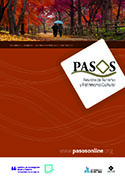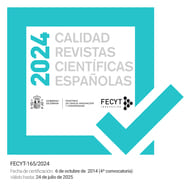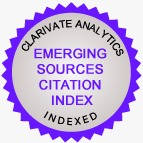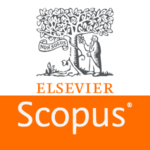Literary Cinematic Tourism: New clues of the Brazilian Literature influences on Film Tourism development in Brazil
DOI:
https://doi.org/10.25145/j.pasos.2022.20.067Keywords:
Literary tourism, Cinema, BrazilAbstract
The relationship between cinema and literature is permanent from film’s beginnings, with film adaptations stealing fire from great works. This paper analyses the relationship between film and tourism, focusing on the role of Brazilian literature's influences in this context. Storytelling as a tool and the relevance of "travel with a purpose" are additional subjects discussed in relation to this type of tourism. This is an exploratory study that uses textual analysis (word clouds and similarity analysis). The textual corpus is formed by the synopsis of films based on Brazilian literature (n=25). The results show new clues for the understanding of a promising market niche in audiovisual tourism in Brazil: Literary Film Tourism (LCT in Brazilian).
Downloads
Publication Facts
Reviewer profiles N/A
Author statements
- Academic society
- PASOS. Revista de Turismo y Patrimonio Cultural
- Publisher
- Instituto Universitario de Investigación Social y Turismo. Universidad de La Laguna (España) - Instituto Universitario da Maia ISMAI (Portugal)
References
Abraccine (2016). Abraccine lança "100 melhores filmes brasileiros" no Festival de Gramado. At <https://bit.ly/2TdF3Ei> (accessed May 2020).
Abraccine and Canal Brasil (2016). 100 melhores filmes brasileiros. Organizador: Paulo Henrique Silva. Belo Horizonte, MG: Letramento.
Allis, T.; et al. (2020) Turismo, Literatura e Tecnologias em Movimento. Caderno Virtual de Turismo, 20 (2) Dossiê Temático.
Ancine (2020). Mapa de mostras e festivais no Brasil. At <https://bit.ly/3cHzS7o> (accessed May 2020).
Brasil (2018). Ministério do Turismo. Mtur formaliza Grupo de Turismo Cinematográfico. At <https://bit.ly/363Wv3i> (acessed May 2020).
Brasil (2008). Ministério do Turismo. Turismo Cinematográfico Brasileiro. Brasilia. At <https://bit.ly/2WFIEgC> (accessed May 2020).
Booker, C. (2004). The seven basic plots. New York: Continuum.
Büscher, M., Urry, J. and Witchger, K. (edt.). (2011). Mobile methods. Routledge.
Campbell, J. (1989). O Herói de mil faces. São Paulo: Pensamento, Cultrix.
Çevik, S. (2020). Literary tourism as a field of research over the period 1997-2016. European Journal
of Tourism Research 24, 2407.
Cinemateca (2020). Filmografia Brasileira. Avaible at <http://bases.cinemateca.gov.br/cgi-bin/wxis.exe/iah/?IsisScript=iah/iah.xis&base=FILMOGRAFIA&lang=p> (accessed Oct. 2020).
Dena, C. (2004). Current State of Cross Media Storytelling: Preliminary observations for future design. European Information Systems Technologies Event. At: <http://www.christydena.com/Docs/DENA_CrossMediaObservations.pdf> (accessed Oct. 2020).
Durand G. (2011). O imaginário: ensaio acerca das ciências e da filosofia da imagem. Trad. Renée Eve Levié. 5a. Ed. Rio de Janeiro: DIFEL.
Ekman, P.; Cordaro, D. (2011). What is Meant by Calling Emotions Basic. Emotion Review, 3(4), 364–370.
Elias, N. (1994). O processo civilizador: Uma história dos costumes. Rio de Janeiro: Jorge Zahar Ed. v I.
Elias, N. (1993). O processo civilizador: Formação do Estado e Civilização. Rio de Janeiro: Jorge Zahar Ed. v. II.
Elicher, M.J. (2014). Estética como aporte ideológico para a produção do espaço na zona portuária do Rio de Janeiro. 2014. 199 f. Tese (Doutorado em Geografia). Universidade Federal Fluminense, Niterói.
Food'n Road (2020). Como criar personas para o seu negócio de turismo. Avaible at <https://foodandroad.com/pro/br/criar-personas-turismo/> (accessed Oct. 2020).
Gardies, R.(2011). Compreender os cinemas e as imagens. Tradução Pedro Elói Duarte. Lisboa: Edições Textos & Grafia, Lda.
Gastal, S. (2005). Turismo, imagens e imaginários. São Paulo: Aleph.
IBGE (2019). Unidades da Federação. Brasil. Avaible at <https://www.ibge.gov.br/geociencias/organizacao-do-territorio/estrutura-territorial/15774-malhas.html?=&t=downloads> (accessed Oct. 2020).
Jenkins, H. (2009). Cultura da convergência. trad. Susana Alexandria. – 2a ed. – São Paulo : Aleph, 2009. Massarolo, J. C. (2013). Storytelling transmídia: narrativa para múltiplas plataformas. Tríade: Revista De Comunicação, Cultura E Mídia, 1 (2), 335-347.
Moyle, B.D. et al. (2019) The next frontier in tourism emotion research. Current Issues in Tourism, 22(12), 1393-1399.
Nascimento, F.M. (2009). Cineturismo. Coleção ABC do Turismo. São Paulo: Aleph.
Nora, P. (1993). Entre memória e história. A problemática dos lugares. Trad: Y.A. Khoury. Projeto História. Revista do Programa de Estudos Pós-Graduação de História, 10.
O'Connor, N. & Kim, S. (2014). Pictures and prose: exploring the impact of literary and film tourism, Journal of Tourism and Cultural Change, 12 (1), 1-17.
Panosso Netto, A. (2005). Filosofia do turismo: Teoria e Epistemologia. São Paulo: Aleph.
Pereira, O.A. (2009). Cinema e Literatura: dois sistemas semioticos distintos. Kaliope, 10 (5), p. 42-69. Ago/Dez. Available at: <https://revistas.pucsp.br/kaliope/article/view/7471/0>.
Pesavento, S.(1999). O imaginário da cidade: visões literárias do urbano – Paris, Rio de Janeiro. Porto Alegre: Edufrgs.
Picard, R. (1995). Affective computing. Technical Report 321, M.I.T Media Laboratory Perceptual Computing.
Pine II, B.J. and J.H. Gilmore (2011). The Experience Economy, Updated Edition, Boston, MA: Harvard Business Review Press.
Plutchik, R. (1980). Emotion: A psychoevolutionary synthesis. New York: Harper & Row.
Rodríguez Campo, L.; Fraiz Brea, J. A.; González, E.A. El turismo cinematográfico como tipología emergente del turismo cultural PASOS. Revista de Turismo y Patrimonio Cultural, 12 (1), 2014, 159-171 Universidad de La Laguna El Sauzal (Tenerife), España.
Sheller, M. and Urry,, J. (2006). The new mobilities paradigm. Environment and planning A, 38(2), 207-226.
Sandvik, K. (2012). Litterära resor – turism i spåren efter böcker, filmer och författere, Scandinavian Journal of Hospitality and Tourism, 12 (3), 284-287.
Santaella, L. and Nöth, W. (2001). Imagem: cognição, semiótica, mídia. 3ª. edição. São Paulo: Editora Iluminuras Ltda.
Santos, E.P.; Almeida, J.B.; Figueiredo, C.A.D.M. (2018). Storytelling: a persuasão das histórias na publicidade. IV SIMGETI. 16 e 27 de novembro de 2018. Varginha.
Sarlo, B. (2017). Da Amazónia às Malvinas. Lisboa: Tinta da China.
Scott, N. (2020). "Cognitive psychology and tourism – surfing the “cognitive wave”: a perspective article", Tourism Review, 75 (1), 49-51.
Stam, R. (2003). Introdução à teoria do cinema. São Paulo: Papirus, 3a. Ed.
Vogler, C. (2015). A Jornada do Escritor: Estrutura mítica para escritores. Trad. Petê Rissatti.São Paulo: Aleph. 3a Ed.
Urry, J. (2001). O Olhar do Turista. São Paulo: SENAC.
Downloads
Published
How to Cite
Issue
Section
License
Copyright (c) 2021 Maria Jaqueline Elicher, Carla C L Fraga

This work is licensed under a Creative Commons Attribution-NonCommercial-NoDerivatives 4.0 International License.
I confirm that the work is original (of my/our authorship), and that it will not be submitted to other journals or publications until the final resolution of the review process in PASOS, RTPC.
I authorize the publication of my work by PASOS, PSTN of free and open access in any of the formats that I deem appropriate, for an indefinite period of time and as a non-remunerated collaboration.
Likewise, the author(s) understands that the published work may be linked or deposited on any server or included in other publications (republication), provided that the new place and/or new edition references the original publication and acknowledges the authorship and copyright ownership of PASOS RTPC publications.
Authors understand that a plagiarism-self-plagiarism check will be performed, and the article may be removed at any time from the editorial flow.










